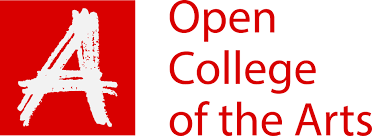Demonstration of technical and visual skills
I used a number of techniques in this assignment: projection; appropriation; layers; image manipulation; text captions. It was the first time I had used photoshop for an assignment. My only other experience of using it was in part one of this course. I’m still finding my way with it but I mainly used the layers function and adjusted the opacity of the top two layers. My compositions were carefully chosen to match the childhood photo with the event in my life. I also considered the placement of the document over the image, either to hide my facial features or to highlight other aspects such as my eyes or smile.
I was originally going to print on 1×1 square format paper but decided on printing them on the upper half of A4 paper still using a 1×1 frame. The A4 sheets would then be placed together in a sleeve folder to represent medical records. I made a comparison by printing a one set on semi-gloss and another on archival matte. I originally had the idea to print the ultrasound scan on semi-gloss and the remainder on matte so that there was a sensory aspect of picking up an x-ray. I decided not to progress this idea as the matte prints did not produce the level of detail I wanted. They were too dull and flat. Further editing specifically for matte paper may have improved this.
The layering and detail of the document text offers the viewer multiple levels to study. Their eye will be taken to the enlarged text fragment. They will then move to the childhood photo and hopefully start to read the text and ultimately pick up on the dates. I expect it will take a number of views to notice all of the details. The volume of text will also get the viewer more involved and possibly give a sense of being overwhelmed.
Quality of outcome
Having worked through the exercises in part 2 I found the poem exercise made me understand what this course is trying to teach. My issue now is trying to find friends and other students to show my work to get appropriate feedback. Looking at the student forums I think a large number of people are struggling with the emotional and feeling aspect of photography. Even during this assignment I started out too literal although I still think the final submission gives away too much.
It is possibly too personal for most viewers and too much of ‘me’. Although that it is what I wanted this assignment to be, I think the next challenge will be to make it accessible to a wider audience. The personal stuff could be replaced but keeping the idea of nostalgia and use visual metaphors to represent the events.
I have documented my idea development in several posts and hopefully have described my thought processes and the artists that inspired me and gave me ideas. I’m not saying I have cracked the code with this course or this assignment but I am beginning to understand how photography can be used to convey feelings.
My submission of 8 images has been printed on A4 semi gloss paper and placed in a mocked up medical file. I have handwritten the photo titles on the prints and am interested to know if this is acceptable artisticly for photography.
Demonstration of creativity
All my previous assignment on EYV and CAN have been variations of street and documentary photography. This assignment was staged and indoors. I had full control over composition and lighting. It was mostly enjoyable but at times I became frustrated at not being able to produce what I had visualised in my head. Especially when everything is under your own control. I find street photography and creating images from ‘found’ scenes more exciting. Possibly something about the thrill of the chase. I would like to do more ‘indoor’ photography to gain more experience of staging and lighting.
In some of my early results the childhood image was too prominent and as it wasn’t my image I felt like a fraud submitting it for my assignment. This led me to research the use of appropriation which really added impetus to the project. It taught me that it is an artistic skill when making the selection of the ‘found’ image.
The selection of the photo, the selection of the document and the image title are all artistic choices. It’s not random. The placement of the document fragments and text is also an artistic choice. It is not enough to overlay some documents on to some old photos and expect it to convey the ‘unseen’ notion of mental health. There has to be another level. I hope I made some good choices to achieve this.
Context
I was intrigued and troubled by Peter Mansell’s quote regarding his personal project Check up , “The effect of creating such images was cathartic. I had not realised just how much emotional pressure I had repressed for so many years“. For me the experience has been an emotional challenge but it was a positive step towards understanding my mental health.
I initially looked for photographers whose subject was mental health. I found an interesting project with Jennifer Pattison’s series Edward. She used objects to convey what it was like growing up with someone with mental health problems. My objects were family slide photos and my personal documents.
I then researched photographers that used documents in their work. Mari Mahr’s A Few Days In Geneva used layers and document fragments to create dreamlike childhood memories. The fragments and memories were something I wanted to use in this assignment.
Whilst researching appropriation I found Barbara Kruger (b. 1945) used found images and added text in white-on-red Futura Bold Oblique and Helvetica Ultra Condensed fonts. From this I thought that using the fragments as a banner across the full width offered a consistent feel to all the images.
